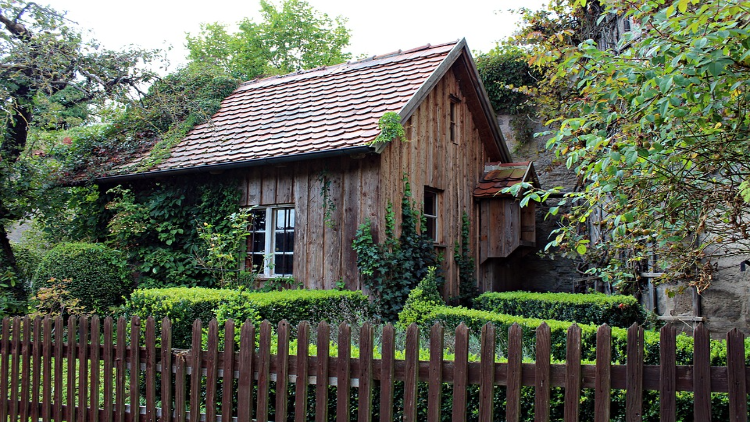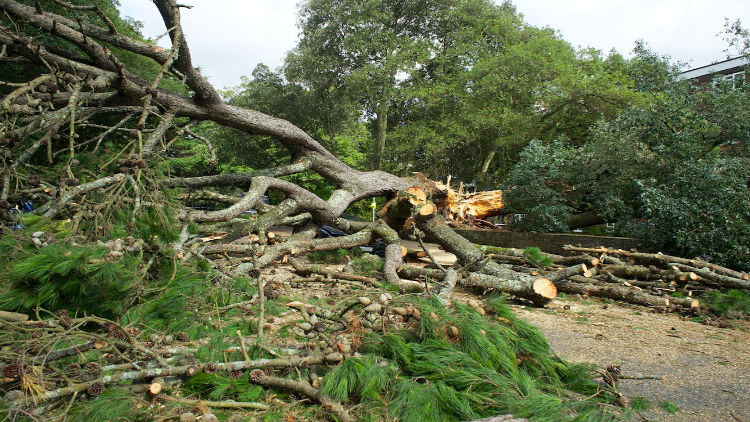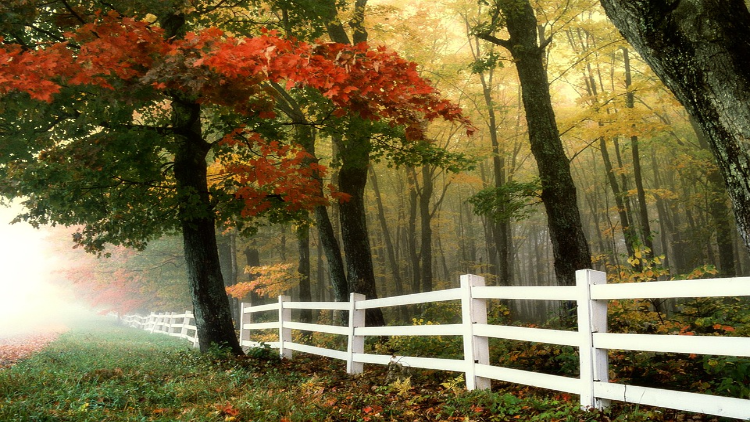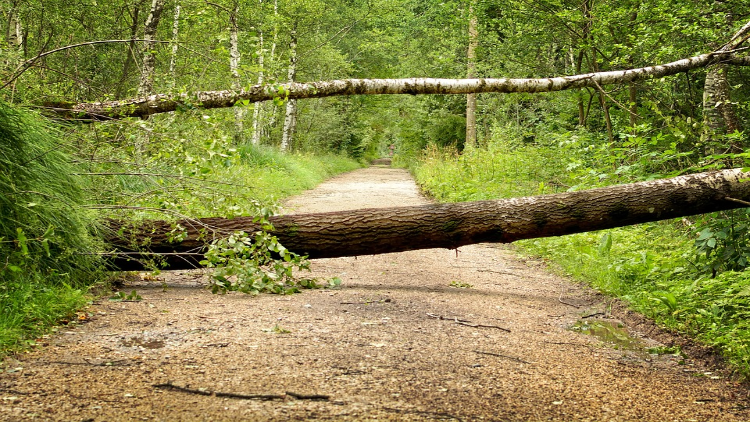Planning to start planting trees on property line? You’ll need to approached the task with care. To be a good neighbor, it is important to respect the boundaries of the land around your property.
If not, conflicts can quickly arise between once-friendly neighbors that can lead to lawsuits and costly damages.
Before undertaking this renovation project, a few steps should be taken to prevent turning that nice neighbor into your worst enemy.
What Is the Neighbor Boundary Rule?
Encroaching over an invisible line between properties can easily be done. A simple method to avoid potential boundary line disputes is to talk to your neighbor before any work has commenced and made sure that boundary lines are clearly understood.
Secondly, make sure that you understand the laws of your particular state. Some states have different boundary line laws, so It’s always a good idea to make sure you understand them.
Likewise, if there are any home-owner association rules to comply with when planting trees on property line, make sure to follow them as well. To maintain good relations, explain what the landscaping renovations will entail and even what types of trees are going to be planted. If they are in agreement, then the landscaping project can go ahead as planned as long as everything is in compliance with local laws.
If, however, the neighbor is not in agreement, then the tree or trees cannot be planted on the boundary line. To disregard their opposition would be unwise and would be interpreted as trespassing.
Tree Law Settlement
In such a situation, any landscaping plans would need to be adjusted so that any trees would need to be planted away from the property line so protruding branches do not molest or incur the wrath of your neighbor.
This new location may not be the most desirable aesthetically in a small garden, but either an alternative site needs to be selected or the landscaping project abandoned.

(Image: Avantrend10)
Compromise has to be the key because, in the United States and Canada, there are no hard and fast rules. States or courts are loathed to intervene, and this is often a gray area subject to interpretation, so both prefer that neighbors settle the boundary rules between themselves.
Responsibilities When Planting Trees on Property Line
If the roots of a tree encroach onto the other side of a boundary line as it grows, causing cracks to appear in sidewalks, for example, or even damage to a fence, a financial burden is going to fall on someone’s shoulders. In this scenario, it will fall to the tree’s owner to undertake the costly repairs. In the event that the roots continue to cause havoc, it is entirely possible that the local authorities could order the owner to remove the tree entirely.
Can I Sue My Neighbor for Tree Damagewill?
Major disputes can arise if a tree is toppled over in a storm and falls onto the neighboring property causing significant damage.3
To avert liability, the tree owner would have to prove that the tree was properly maintained and in good health. If that were the case, the insurance company for the damaged house would cover the repair costs.

(Image: Mike B11)
If, however, the tree had been neglected and was decidedly unhealthy, as in it was ready to keel over with a puff of wind, never mind in a heavy storm, then the owner would have to dig deep to get his neighbor’s construction costs covered.
How Close to a Property Line Can a Tree Be Planted?
This question often arises when consent has not been granted to place the tree along the property line.
The alternative is to be able to plant the tree as close as possible to the boundary without molesting the neighbor in any way. Fortunately, some state laws stipulate a minimum distance of between 3 – 4 feet, which acts as a guide.
This rule factors in the future growth of the tree and can vary between states, so verifying the statutes might well be prudent.
What it doesn’t consider is the size and type of tree. A large tree is going to have bigger roots that may migrate next door, so it may need to be located a bit further away.
If the roots are not a problem but the protruding branches will become one as the tree matures, it may still be possible to maintain this distance as long as the limbs are trimmed regularly.
Four of the Best Trees To Plant on Property Line
Once both sides of the fence are in agreement that planting trees along the property line would be an attractive feature, it’s time to select the perfect trees for the job.
Four trees that fit the bill perfectly and tick a lot of boxes are:
Even in winter, when the leaves have fallen, their closely-knit branches tend to reduce the force of strong winds.
The Spartan Juniper is an evergreen tree, so it retains its thick bloom of leaves all year round wind-screening,7 delivering all year-round shade and all-year-round privacy.
Growing in the shape of a green pyramid with thick, lush leaves, they barely stretch to 15 feet in height and require no pruning apart from cutting away dead branches.
The capacity to act as a windbreak is even greater as long as they are initially planted about 5–6 feet apart to allow for growth and to maximize the intertwined hedge formation.
An added bonus is that they are unaffected by pests and virtually immune to disease.
What sets them apart are the leaves.
In the summer, they are a thick, impenetrable green barrier, while in the winter they morph into a golden hue that immediately becomes a centerpiece that can be enjoyed by both sides of the property line.
Best Shrubs for Property Lines
When choosing shrubs to place along property lines, the benefits to consider are:
- Does the shrub grow quickly?
- Is it evergreen or flowers frequently?
- In a short drought, will it perish or does it hold up well in dry conditions?
- How much privacy do they deliver?
- Are they time-consuming to maintain?
- How do they smell when in bloom?
Do You Need a Permit To Plant Privacy Trees? Do I Need Permission To Plant Trees on My Land?
Whenever considering any landscaping on private property, it is always prudent to investigate if a permit is going to be required when planting trees on property line from the relevant local state department.
There’s nothing worse than planting the perfect tree in the perfect spot, only to have to uproot it when a local inspector requests to see a non-existent permit.
It is unlikely that a permit or permission would be needed on private property, but in the event that one is required, the license would have to be filled out with details about the potential size of the tree and where it will be located.
Related Reading: Can I Cut Tree Down on My Property? Permission Avoids Illegal Act (2022 Law)
How Close Can You Plant to a Property Line?
According to the regulations,8 since a permit is not needed, the tree can be planted anywhere in the yard. However, there are certain considerations to take on board beforehand.

(Image: ArtTower16)
Some trees require more water than others, so they should be planted either in a part of the lawn that contains more water or at the bottom of an incline so that the water in the soil will run toward the roots.
The direction the roots grow, vertically or horizontally, can determine if the minimum distance of 3 feet is adequate or more like 6 feet is required.
How Far From Property Should Trees Be Planted? (How Far From Property Line Should Trees Be Planted?)
It is also advisable to plant 15–20 feet away from the property to avoid any problems with the roots causing havoc with the foundations as the tree grows. These minimum distance regulations also protect the house from branches scratching at windows.
Underground water or sewer pipes could be at risk of damage as the tree’s roots expand while seeking water, so consulting property plans might be a wise option before planting.
Community Rules on Planting Trees on Boundaries and Obstructing Views
State authorities prefer not to regulate laws when planting trees on property line, preferring to leave the decision to the goodwill of the two neighboring parties. Even fewer states care to be involved when a non-borderline tree is inconveniencing a neighbor.
Some communities have no such compunction.
Do I Need HOA Approval To Plant a Tree?
Occasionally, some of the HOA legislate strict rules against trees that can reduce property values in their area due to location. While in others, if a neighbor’s trees obscure a sunset view, there’s nothing that can be done.
Some ordinances appreciate that trees blocking a scenic view can possibly reduce the value of a property and have put rules in place for the community where one property owner can object to overgrown trees or tree placements.
If the ruling is upheld, either aggressive pruning may be required by the tree owner or the tree itself may even have to be transplanted or removed.
What About Bushes? How Close to the Property Line Can They Be?
Similar to tree placement on the property line between neighbors, a dialogue needs to be opened to ascertain if there are any objections to planting a row of bushes along the boundary line.
In the discussion, the species of the bushes need to be on the agenda to ascertain the height and width they will grow to. With bushes, regular trimming and shaping are required frequently, so who would be responsible for that extra task?
Planting Bushes on Property Line: Bushes Growing Over Property Line.
Generally, if the bushes are on the property line,4 each property owner would be responsible for trimming their side of the bush unless some other arrangement is agreed upon.
How Close to Property Line Can I Plant a Hedge?
Failing the placement on the boundary line, the closest that the bushes can be planted is between 8–9 feet away.
This distance is larger than the requirement when planting trees on property line because the bushes can easily expand in both directions, encroaching onto the neighbor’s property if care isn’t taken.
Between two small private residential properties, it can be fairly easy to reach an agreement. Between two large landowners, an agreement can be considerably harder to come by.
If the boundary line between the two properties meanders for miles, it can be extremely costly to maintain the hedgerows.
Therefore, it is important that all the details for future cooperation are agreed upon, or lines may be crossed, resulting in bitter disputes if one party doesn’t hold up their side of the deal.
Boundary Tree Law: Trees on Property Line Disputes
The law governing who owns a tree can be a little complicated, but it needn’t be.
If the trunk of the tree is wholly implanted on one side of a boundary let, it belongs to that landowner. If it straddles the property line, then ownership is shared, as is the cost of its maintenance.
But is that the same in all states?
Florida Property Line Laws: Tree Laws in Florida
In Florida, a tree is not necessarily owned by both neighbors unless agreed to in advance. One party gives permission for the planting on the proviso that the owner will maintain the tree in good health and prune the branches so they do not become a nuisance.
Pennsylvania Tree laws
Even if there is no agreement in regards to a boundary tree, either neighbor can trim the branches on their side of the property line, but neither neighbor can remove the tree without the consent of the other party.
Texas Law Trees on Property Line: Neighbor Planted Trees on My Property
In a situation where permission is granted for a boundary tree installation with only one owner in charge of its care, only that person would be liable for costs.
In the unforeseen circ*mstance where the tree is felled by a storm, only that party would be responsible for removal and any damages caused to a neighbor’s property.
Can My Neighbor Plant Trees on the Property Line? Neighbor Planting on Property Line
If you believe that a tree planted on your property line could potentially be a problem because it may cast too much shade on your house, then by the law,2 you have the right to stop your neighbor from doing so. Even if you just don’t like the idea of your garden or yard being ringed by trees, it is your prerogative.
If the tree is planted without your consent, that would be considered trespassing on your land and you would have the legal right to sue to have it removed. Once you have given that permission, though, there is a shared responsibility for the tree, for maintenance, pruning, and possibly even regular watering.
Handbook of Florida Fence and Property Law: Trees and Landowner Responsibility
This manual aims to educate property owners on their duties, rights, and obligations for erecting fences on their property.

(Image: Olexa, Michael T., UF|IFAS Extension18)
It covers topics like the obligation of a landowner to fence livestock on the property, the rights of neighboring landowners, where to put fences and trees, encroachments, boundary lines, easem*nts, and contracts between neighbors.
Florida Law Trees on Property Line: Neighbor’s Trees Overhanging My Property
The laws in this state mirror those in others, in regard to who is responsible for trimming back branches on the side of the boundary line.6 In fact, the neighbor will be legally responsible for pruning, broken-off branches, and the general care of the tree on his side of the line.
What Can You Plant on Property Lines?
Hedges, trees, flowers. All these can be planted on property lines as long as an agreement is reached between the property owners about care, costs, and maintenance. Rather than leaving any gray area of responsibilities, getting everything written down in a legal fashion may be warranted.
Rules for Planting Trees on Property Line (Tree Planting Distance From Property Line)
With very few exceptions across the United States, the rules governing tree planting on property lines are very consistent.
Disputes can arise, however, under certain circ*mstances:
- A neighbor tree planting distance from the property line that is within the required distance of 4 feet.
- Planting line trees that were different than agreed upon.
- Planting bushes on the property line instead of the expected trees.
- Unsure what to do if a neighbor’s tree is affecting you.
- If a neighbor planted trees on my property by mistake
Planting Trees Between Sidewalk and Street: Planting Between Sidewalk and Street
Permits are needed to plant trees in these locations, and certain requirements need to be met.
Only certain tree species are allowed depending on the city’s Approved List.
This list covers such conditions as leaf sizes, trunk diameters, the width of the site where the tree will be planted, and if the tree will interfere with overhead power lines.
Planting Trees Near Roads: Best Trees to Plant Near Concrete
Planting near roads, paths, and concrete takes proper planning. The best trees to plant are the ones whose roots grow deep, rather than the ones whose roots grow laterally.

(Image: Johannes Plenio19)
If the roots need to stay near the surface to capture rainwater, they can buckle, crack, or dislodge concrete slabs. Care needs to be taken in species selection.
Property Line Divider Ideas and Inexpensive Property Line Divider Ideas
Using your imagination to create a feature on your property line needn’t be complicated or costly, or even time-consuming. Some easy-to-do ideas are:
- Place a folding screen along the boundary line with flowers or plants intertwined
- Use several large planters with flowers between the two properties
- Make a simple frame with bushy plants and colorful flowers hanging from it
- Lattices are cheap and cheerful when decorated with a little bit of greenery
How Close to the Property Line Can You Plant a Tree? How Close to the Property Line Can I Plant a Tree?
When planting a tree, allow between 3-4 feet, factoring in the type of tree to be planted. Always determine whether there will be any interference with the surrounding area. Sometimes a young tree won’t be completely mature for a few years, so it’s crucial to plan ahead to ascertain whether or not your neighbor’s sunlight will be blocked by the tree. At the end of the day, the responsibility for maintaining the tree, from cutting back wildly sprouting branches or even tending to the health of the tree so it doesn’t topple over in a heavy breeze, will rest on the shoulders of the planter.
Planting Trees on Property Line: Property Line Landscaping Ideas and Front Yard Property Line Divider Ideas
Landscaping the edges of property lines doesn’t necessarily have to be grand.
An easy landscaping idea is to install a row of bricks or a narrow bed or gravel stones at ground level. This can be a nice feature and is not expensive to do.
Other ideas that can actually make the dividing line a feature in the front yard would be a flower bed, a small wall, a mini hedge, or even a white picket fence.
All you need to create that eye-popping property line divider is a little imagination – and a good landscaper.
Planting Trees on Property Line: When Does a Tree Need To Be Removed From the Property Line?
There may come a time when a tree has to go because sometimes planting trees on property line can have unforeseen repercussions.
This may arise when the conflict between two parties has become so contentious due to a seemingly minor disagreement escalating to such a degree that removing the cause of the squabble may be the easiest option. Or the problem could be the tree itself.
Here are five signs that a tree has passed its shelf life and may become a liability:
1. When a tree that year after year always displayed a full head of leaves suddenly has nothing but a constant display of bare branches, it’s a sure sign that the tree is in decline.
It may be due to disease, unseen pests, or old age, but this is probably the best time to voluntarily uproot it before it falls down and causes any damage to private property.
2. If a tree has gone through a brutal storm and is still standing, that can be good news. But if there is too much damage caused by lightning strikes or excessive flooding, care should be taken.
Always check the trunks for splitting or if the tree is leaning at an awkward angle that risks uprooting it entirely.
Related Reading: Who Is Responsible for Fallen Tree Removal? Simple Trick to Find Out

(Image: Antranias20)
The tree may be able to survive the incident as it is very resilient. If in doubt, it is advisable to consult with a professional arborist.
3. An often-overlooked sign that a tree is in trouble is when new sprouts bloom around the base of the trunk.
At first, this can appear to be good news, fresh signs of life. Nothing could be further from the truth.
In reality, these new sprouts are a clear indication that the tree is under duress, possibly due to external factors. If discovered, it’s best to take action early by having them evaluated before it’s too late for the tree’s continued well-being.
4. Roots can often be a problem between neighbors.
Despite proper caution by planting the tree 4 feet away from fencing, roots have been known to burst out of the ground beneath a neighbor’s fence and cause structural damage.
The tree’s owner is liable for the damage caused,5 and to prevent more carnage, removing the tree would be the only viable option.
5. Overcrowding occurs when the main tree has overstayed its welcome and has become too big for its roots. This is recognizable if its canopy or thick trunk is blocking the sun from nearby smaller trees or fauna underneath, stunting their growth.
Eventually, these otherwise healthy plants may all start to wither and die, so something would need to be done urgently.
In this particular situation, it may be the case of sacrificing the one so that the many will survive.
In the case of planting trees on property line, it is better to ask for permission first rather than litigate for forgiveness later.
Whether you’re planting trees or bushes on or near a boundary line, always talk to your neighbor. They may surprise you with a few ideas of what to plant and may even share some of the costs and the labor.
Planting trees on property line between two willing parties can have the power to make any neighborhood more neighborly.
